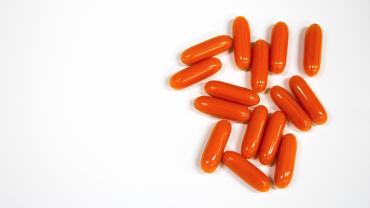
It is well-established in the scientific literature that coenzyme Q10 (CoQ10) plays a variety of key functions in human physiology. CoQ10 is a fat-soluble compound produced by the body for the proper functioning of cells with high metabolic demands, and it’s most highly concentrated in the heart, liver, brain and kidneys. CoQ10 exists in both ubiquinone and ubiquinol forms with its names derived from the word “ubiquitous” because it is present everywhere in the human body. CoQ10 is synthesized endogenously on a branch of the mevalonate pathway, which also produces cholesterol and various other essential metabolic end products. CoQ10 plays a central role in cellular energy metabolism that produces adenosine triphosphate (ATP), the energy currency for muscle contraction and other cellular processes. Within the mitochondrial electron transport system, CoQ10 undergoes continuous reversible oxidation and reduction. As an antioxidant, CoQ10 helps regulate membrane fluidity, recycle radical forms of vitamin C and E, and protect membrane phospholipids against peroxidation.
Geranylgeraniol (GG) is another physiologically essential molecule that works synergistically with CoQ10. GG complements the actions of ubiquinol, as it is a precursor in the synthesis of CoQ10 and many other functional cell metabolites and signaling molecules. GG is an essential building block for the production of CoQ10, vitamin K2 and testosterone/progesterone. GG is also an essential building block for protein synthesis and modification. In addition, GG is a naturally occurring terpenoid in a variety of plants and serves as a precursor to other essential components, such as carotenoids.
The inclusion of GG may overcome limitations to supplementing with CoQ10 alone. It is a large molecule whose transfer is limited from the outside to the inside of cells; in vitro studies have shown that passive diffusion of CoQ10 is low. Fortunately, GG supplementation may provide the perfect complementary solution to this problem. By boosting the endogenous production of CoQ10, supplemental GG, which is well-absorbed in the gastrointestinal tract, may increase body stores of CoQ10 compared with exogenous CoQ10. GG can easily penetrate outer and inner cell membranes, as its molecular weight is one-third that of CoQ10. Supplemental GG provides building blocks and upregulates metabolic pathways that synthesize ubiquinone and other essential cell-signaling molecules, which coordinate cell function and communication, cellular growth, survival and apoptosis, protein synthesis/modification and their intracellular movement.
GG complements CoQ10 supplementation as a precursor and stimulator of metabolic pathways to support essential cellular and physiological functions. In vitro studies have shown that GG can increase CoQ10 synthesis by mass action. GG supplementation may compensate for the age-related decline in CoQ10 synthesis, which affects the mitochondrial respiration rate, thus lowering metabolic rate. GG has the potential to enhance ATP production, potentially increasing physical and mental performance at any age. A 10% decline in aerobic cellular respiration has been observed every decade, possibly due to the natural decline in ubiquinol synthesis and increased degradation due to aging. The decline in CoQ10 levels may be an indicator of reduced endogenous production of its precursor, GG, which declines naturally during aging and is inhibited by the use of certain pharmaceutical drugs, namely, statins and bisphosphonates. GG repletion may mitigate the statin-related downregulation of CoQ10 synthesis and many additional statin adverse effects via replenishing physiologically important metabolites created upstream from CoQ10 synthesis.
In a study that investigated the effects of 300 mg/day ubiquinol supplementation in individuals treated with 30 mg/day of statin, plasma CoQ10 dropped from 773 mmol/L to 539 mmol/L within the first 4 weeks of statin treatment. After 4 weeks of ubiquinol administration, while continuing statin use, plasma CoQ10 increased to 2,305 mmol/L, which is more than three times higher than the baseline CoQ10 level observed without the statin. However, exogenous supplementation was only able to partially reverse the mitochondrial dysfunction caused by statin use.
These results indicate there is a need for additional interventions to further improve mitochondrial function for patients using statins, suggesting that GG may be efficacious, as evidenced by reduced mitochondrial damage and maintenance of healthy mitochondrial structure/function in vitro. In human monocytes and hepatocytes, GG showed reversal of statin-induced reductions in ubiquinone synthesis and mitochondrial electron transport and respiration that typically lead to cell death without impeding the drug’s cholesterol-lowering property. Because myogenesis requires modification of specific proteins by GG (a process called geranylgeranylation), supplementation with GG was shown to prevent statin-induced myopathy and reduce the expression of muscle atrophy-related genes. Notably, the addition of GG was more effective than solely exogenous CoQ10 for attenuating these adverse effects.